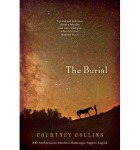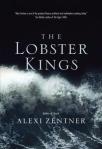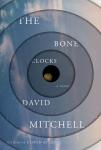I will be the first to admit it: the KfC blog had a lot of downtime in 2014 as distractions, diversions and domestic disturbances (it is amazing what the impact of fixing a collapsed, 100-year-old sewage pipe can have on one’s reading and writing) diverted me from dedicated discussion of books. And, let’s face it, a lack of discipline from the blogger reduced both the number of books read and reviews produced. I pledge to do better in 2015.
Still, I read more than enough books to produce what I feel is a worthy Ten Best list. They are listed in the order that I read them — click on the title to go back to the full review.
 The Tin Flute, by Gabrielle Roy. This novel, along with Hugh MacLennan’s Two Solitudes, another exploration of French-English tensions in Quebec, was part of my 2013 project to revisit Canadian authors whom I had read in my youth. Rereading Roy’s novel did not disappoint — indeed, it was even better than when I first read it. Her story of the Lacasse family in post-Depression Montreal is heart-warming at one end, tear-inducing at the other. MacLennan’s novel may be a better example of the macro aspect of the English-French conflict in mid-20th century Montreal — The Tin Flute decisively and sympathetically explores the human cost it imposes on one family.
The Tin Flute, by Gabrielle Roy. This novel, along with Hugh MacLennan’s Two Solitudes, another exploration of French-English tensions in Quebec, was part of my 2013 project to revisit Canadian authors whom I had read in my youth. Rereading Roy’s novel did not disappoint — indeed, it was even better than when I first read it. Her story of the Lacasse family in post-Depression Montreal is heart-warming at one end, tear-inducing at the other. MacLennan’s novel may be a better example of the macro aspect of the English-French conflict in mid-20th century Montreal — The Tin Flute decisively and sympathetically explores the human cost it imposes on one family.
 The Burial, by Courtney Collins. Australian author Courtney Collins’ novel started out with two major strikes against it for me — a hackneyed prologue about an Houdini appearance in Melbourne that serves as the novel’s over-arching metaphor and the introduction of a deceased infant narrative voice, normally a killer when it comes to KfC prejudices. Collins recovered quickly — we soon meet her heroine Jessie Hickman and I was quickly engaged in her story of “escape” (you can’t quite get away from the Houdini metaphor) from brutal experiences. I have a deep affection for North American “frontier” novels; The Burial is an excellent illustration that Australians can produce equally good ones.
The Burial, by Courtney Collins. Australian author Courtney Collins’ novel started out with two major strikes against it for me — a hackneyed prologue about an Houdini appearance in Melbourne that serves as the novel’s over-arching metaphor and the introduction of a deceased infant narrative voice, normally a killer when it comes to KfC prejudices. Collins recovered quickly — we soon meet her heroine Jessie Hickman and I was quickly engaged in her story of “escape” (you can’t quite get away from the Houdini metaphor) from brutal experiences. I have a deep affection for North American “frontier” novels; The Burial is an excellent illustration that Australians can produce equally good ones.
 Embers, by Sandor Marai. I don’t read nearly as much translated fiction as some bloggers do, but that doesn’t mean that every year’s top 10 list seems to feature at least one example. Embers was first published in 1942 — it has been a well-read classic ever since and, like a good wine (it is one of those “dinner-based” novels), it has improved with age. The book opens with “the General” instructing his servant to prepare the landau to go and fetch “the Captain” from his lodgings in a nearby town. As the book unfolds we experience the chilling story of their history — we slowly learn what it was that fueled the “embers” which are all that remains of their current relationship.
Embers, by Sandor Marai. I don’t read nearly as much translated fiction as some bloggers do, but that doesn’t mean that every year’s top 10 list seems to feature at least one example. Embers was first published in 1942 — it has been a well-read classic ever since and, like a good wine (it is one of those “dinner-based” novels), it has improved with age. The book opens with “the General” instructing his servant to prepare the landau to go and fetch “the Captain” from his lodgings in a nearby town. As the book unfolds we experience the chilling story of their history — we slowly learn what it was that fueled the “embers” which are all that remains of their current relationship.
 Us Conductors, by Sean Michaels. Us Conductors was the Shadow Giller Jury’s choice for 2014 — it is safe to say we were as stunned as anyone else when the Real Jury agreed with our selection. It is the fictionalized biography of Lev Termen, a Russian scientist and inventor, who invented and promoted the theremin, an electronic instrument that opened the field of synthesized music which we hear so often today. Termen’s initiative was promising enough that his Soviet masters sent him to America — under the umbrella of promoting the theremin, his minder conducted assorted spying initiatives. They did not work out well and, of course, Lev was blamed. His later time in the Gulag is the least attractive part of the book — author Michaels saves it with a delightful, if somewhat absurd, conclusion where Lev applies his inventing talents to spying on Moscow-based U.S. diplomats. An excellent read, one that I think compares favorably with Jean Echenoz’s equally inventive fictionalized biographies (Tesla, Ravel, and Zatopeck) which you can also find reviewed on this site.
Us Conductors, by Sean Michaels. Us Conductors was the Shadow Giller Jury’s choice for 2014 — it is safe to say we were as stunned as anyone else when the Real Jury agreed with our selection. It is the fictionalized biography of Lev Termen, a Russian scientist and inventor, who invented and promoted the theremin, an electronic instrument that opened the field of synthesized music which we hear so often today. Termen’s initiative was promising enough that his Soviet masters sent him to America — under the umbrella of promoting the theremin, his minder conducted assorted spying initiatives. They did not work out well and, of course, Lev was blamed. His later time in the Gulag is the least attractive part of the book — author Michaels saves it with a delightful, if somewhat absurd, conclusion where Lev applies his inventing talents to spying on Moscow-based U.S. diplomats. An excellent read, one that I think compares favorably with Jean Echenoz’s equally inventive fictionalized biographies (Tesla, Ravel, and Zatopeck) which you can also find reviewed on this site.
 The Tivington Nott, by Alex Miller. Alex Miller is another Australian author who frequently visits the “frontier” story, but this one is set in England, based on his own experiences as a stock boy there before he left for Australia. The “nott” of the book’s title is a stag without antlers — the story is about a crew of Devon and Somerset “hunters” who are obsessed with tracking it down. Miller succeeds in making all of them (not the least himself, the stock boy) fully developed characters who have their own charms and failings. I think Miller is one of the most under-recognized authors writing in English (I am reading his entire catalogue at the rate of one a year) — The Tivington Nott is an excellent example of his strengths.
The Tivington Nott, by Alex Miller. Alex Miller is another Australian author who frequently visits the “frontier” story, but this one is set in England, based on his own experiences as a stock boy there before he left for Australia. The “nott” of the book’s title is a stag without antlers — the story is about a crew of Devon and Somerset “hunters” who are obsessed with tracking it down. Miller succeeds in making all of them (not the least himself, the stock boy) fully developed characters who have their own charms and failings. I think Miller is one of the most under-recognized authors writing in English (I am reading his entire catalogue at the rate of one a year) — The Tivington Nott is an excellent example of his strengths.
 The Lobster Kings, by Alexi Zentner. I am pretty much out of step with the rest of the Canadian literary community and bloggers in my admiration for this one — reviews were not impressive and it failed to make any Canadian prize list. The Kings are a lobster-fishing family who have pretty much run Loosewood Island off the coast of New Brunswick and Maine for almost 300 years. In the current time of the novel, they are facing challenges from both poachers and drug runners — and that produces some disastrous consequences. Okay, some of the plot developments are entirely too predictable and verge on the hackneyed, but I found that Zentner produced a cast of characters who came fully to life in a different kind of “frontier” story.
The Lobster Kings, by Alexi Zentner. I am pretty much out of step with the rest of the Canadian literary community and bloggers in my admiration for this one — reviews were not impressive and it failed to make any Canadian prize list. The Kings are a lobster-fishing family who have pretty much run Loosewood Island off the coast of New Brunswick and Maine for almost 300 years. In the current time of the novel, they are facing challenges from both poachers and drug runners — and that produces some disastrous consequences. Okay, some of the plot developments are entirely too predictable and verge on the hackneyed, but I found that Zentner produced a cast of characters who came fully to life in a different kind of “frontier” story.
 The Blazing World, by Siri Hustvedt. The Blazing World makes a surprise appearance here — I would not have read it were it not one of the first American-written novels longlist for the Booker Prize and if you visit my review you will find that I was ambivalent about it at that time. It has improved in memory. It is the story of Harriet Burden, the widow of a prominent New York dealer who feels her own artistic abilities are overlooked and sets out on a series of interesting ruses to prove her point. While that central theme carries the book, Hustvedt (the spouse of Paul Auster) shares her husband’s interest in producing novels that have a wealth of story lines — some of them didn’t work for me when I first read The Blazing World but they have bloomed with life in the months since.
The Blazing World, by Siri Hustvedt. The Blazing World makes a surprise appearance here — I would not have read it were it not one of the first American-written novels longlist for the Booker Prize and if you visit my review you will find that I was ambivalent about it at that time. It has improved in memory. It is the story of Harriet Burden, the widow of a prominent New York dealer who feels her own artistic abilities are overlooked and sets out on a series of interesting ruses to prove her point. While that central theme carries the book, Hustvedt (the spouse of Paul Auster) shares her husband’s interest in producing novels that have a wealth of story lines — some of them didn’t work for me when I first read The Blazing World but they have bloomed with life in the months since.
 The Narrow Road to the Deep North, by Richard Flanagan. This year’s Booker Prize winner was another novel that had its flaws for me, but those have receded over time and the exceptionally powerful middle section of the book has become even more impressive. Dorrigo Evan is a Tasmanian who is one of the Australian prisoners-of-war who are ruthlessly used by the Japanese to build the Siam to Burma railway — he survives the experience and becomes a national hero, even though he is a deeply flawed individual. I still wish that Flanagan had spent more effort in developing those flaws in the post-war period — I can’t fault the Booker jury for acknowledging how well he captured the horrors of the POW experience.
The Narrow Road to the Deep North, by Richard Flanagan. This year’s Booker Prize winner was another novel that had its flaws for me, but those have receded over time and the exceptionally powerful middle section of the book has become even more impressive. Dorrigo Evan is a Tasmanian who is one of the Australian prisoners-of-war who are ruthlessly used by the Japanese to build the Siam to Burma railway — he survives the experience and becomes a national hero, even though he is a deeply flawed individual. I still wish that Flanagan had spent more effort in developing those flaws in the post-war period — I can’t fault the Booker jury for acknowledging how well he captured the horrors of the POW experience.
 The Bone Clocks, by David Mitchell. This one is a collection of six connected novellas, centred around the character of Holly Sykes. We meet her first as a 15-year-old in Gravesend, are told some of her early paranormal experiences and are introduced to a number of characters who will show up in later sections. As in other Mitchell novels (think Cloud Atlas or Ghostwritten), succeeding sections move on to Cambridge, the Swiss Alps and the global author promotion world, before the author heads off into resolving the paranormal issue (my least favorite of the sections) and then concludes with a post-apocalyptic section set mainly in Ireland. I prefer Mitchell’s penetrating analysis of current conditions (he is a brilliant satirist) to his “bigger” themes — for my money The Bone Clocks has plenty of both.
The Bone Clocks, by David Mitchell. This one is a collection of six connected novellas, centred around the character of Holly Sykes. We meet her first as a 15-year-old in Gravesend, are told some of her early paranormal experiences and are introduced to a number of characters who will show up in later sections. As in other Mitchell novels (think Cloud Atlas or Ghostwritten), succeeding sections move on to Cambridge, the Swiss Alps and the global author promotion world, before the author heads off into resolving the paranormal issue (my least favorite of the sections) and then concludes with a post-apocalyptic section set mainly in Ireland. I prefer Mitchell’s penetrating analysis of current conditions (he is a brilliant satirist) to his “bigger” themes — for my money The Bone Clocks has plenty of both.
 Tell, by Frances Itani. Set in the small town of Desoronto, Ontario in 1919, this novel is an exploration of the trials and tensions in a post Great War community, far removed from the conflict itself. Kenan Oak has returned from the war badly damaged (his entire left side pretty much useless) and he and his wife Tress are struggling to re-establish their relationship. What made the novel work for me is the way that their story is contrasted with that of his Uncle Am and his wife — in a way similar to The Tin Flute, Tell is the exploration of a community and its values and the way the “ordinary” experience the waves of “great” events.
Tell, by Frances Itani. Set in the small town of Desoronto, Ontario in 1919, this novel is an exploration of the trials and tensions in a post Great War community, far removed from the conflict itself. Kenan Oak has returned from the war badly damaged (his entire left side pretty much useless) and he and his wife Tress are struggling to re-establish their relationship. What made the novel work for me is the way that their story is contrasted with that of his Uncle Am and his wife — in a way similar to The Tin Flute, Tell is the exploration of a community and its values and the way the “ordinary” experience the waves of “great” events.